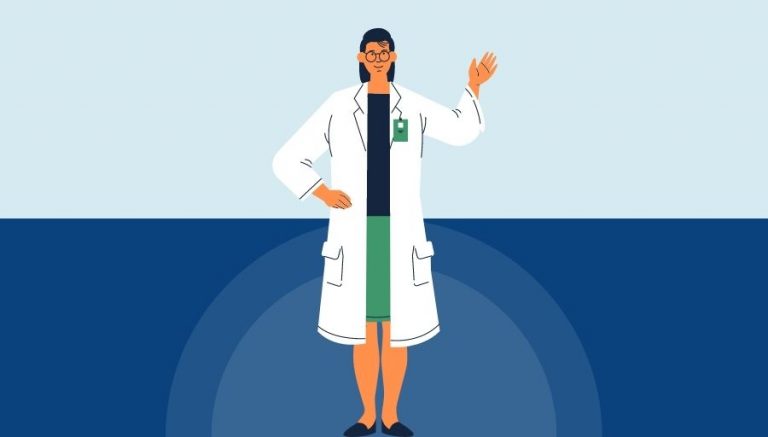How To Use CPT Code 43332
CPT 43332 describes the repair of a paraesophageal hiatal hernia, including fundoplication, performed via laparotomy without the use of mesh or other prosthetic implantation. This article will cover the description, procedure, qualifying circumstances, appropriate usage, documentation requirements, billing guidelines, historical information and billing examples.
1. What is CPT Code 43332?
CPT 43332 is used to describe the surgical repair of a paraesophageal hiatal hernia, which occurs when the stomach slides up next to the esophagus. This procedure includes fundoplication, which involves wrapping the gastric fundus around the esophagus to treat gastroesophageal reflux. It is performed via laparotomy, which is a surgical incision in the abdomen, and does not involve the use of mesh or other prosthetic implantation. This code is not appropriate for newborns.
2. Official Description
The official description of CPT code 43332 is: ‘Repair, paraesophageal hiatal hernia (including fundoplication), via laparotomy, except neonatal; without implantation of mesh or other prosthesis.’
3. Procedure
- The surgeon makes an incision in the abdomen, typically through the middle of the flank, to access the hiatal hernia.
- The liver is mobilized to visualize the hiatus, the opening in the diaphragm where the esophagus passes through.
- Any adhesions are removed, and the part of the stomach that has moved into the chest is separated from the hernia sac.
- The surgeon ensures that the stomach is properly positioned in the abdominal cavity and may use sutures to narrow the enlarged diaphragmatic esophageal hiatus.
- A complete fundoplication is performed by attaching the upper portion of the stomach (fundus) over the uppermost part of the gastroesophageal (GE) junction with sutures. The fundus may wrap completely or partially around the esophagus.
- The surgeon removes any instruments used, controls bleeding, and closes the laparotomy incision.
4. Qualifying circumstances
CPT 43332 is appropriate for patients with a paraesophageal hiatal hernia, where the stomach slides up next to the esophagus. This procedure is performed via laparotomy, and the repair includes fundoplication. It is important to note that this code should not be used for newborns, and it specifically excludes the use of mesh or other prosthetic implantation.
5. When to use CPT code 43332
CPT code 43332 should be used when a surgeon performs a laparotomy to repair a paraesophageal hiatal hernia, including fundoplication, without the use of mesh or other prosthetic implantation. It is important to ensure that the patient meets the qualifying circumstances for this code and that the procedure is performed via laparotomy.
6. Documentation requirements
To support a claim for CPT 43332, the surgeon must document the following information:
- Patient’s diagnosis of a paraesophageal hiatal hernia
- Description of the repair procedure, including the use of fundoplication
- Date of the surgery
- Details of the laparotomy incision
- Any additional procedures performed during the surgery
- Any complications or unexpected findings
- Signature of the surgeon performing the procedure
7. Billing guidelines
When billing for CPT 43332, ensure that the procedure meets the qualifying circumstances and is performed via laparotomy without the use of mesh or other prosthetic implantation. It is important to follow the specific guidelines for reporting this code and to review any additional tips or considerations provided by coding authorities. It is also important to ensure accurate documentation to support the claim.
8. Historical information
CPT 43332 was added to the Current Procedural Terminology system on January 1, 2011. It has not undergone any updates since its addition. It is worth noting that this procedure was added to the Inpatient Only (IPO) list for Medicare in 2017.
9. Examples
- A surgeon performs a laparotomy to repair a paraesophageal hiatal hernia, including fundoplication, for a patient with gastroesophageal reflux disease.
- During a laparotomy, a surgeon repairs a paraesophageal hiatal hernia, including fundoplication, for a patient experiencing severe symptoms of regurgitation and chest pain.
- A patient with a large paraesophageal hiatal hernia undergoes a laparotomy with fundoplication to alleviate symptoms of dysphagia and heartburn.
- A surgeon performs a laparotomy to repair a paraesophageal hiatal hernia, including fundoplication, for a patient with a history of recurrent hiatal hernia.
- During a laparotomy, a surgeon repairs a paraesophageal hiatal hernia, including fundoplication, for a patient with complications such as volvulus or incarceration of the hernia.
- A patient with a symptomatic paraesophageal hiatal hernia undergoes a laparotomy with fundoplication to prevent further complications such as gastric volvulus.


